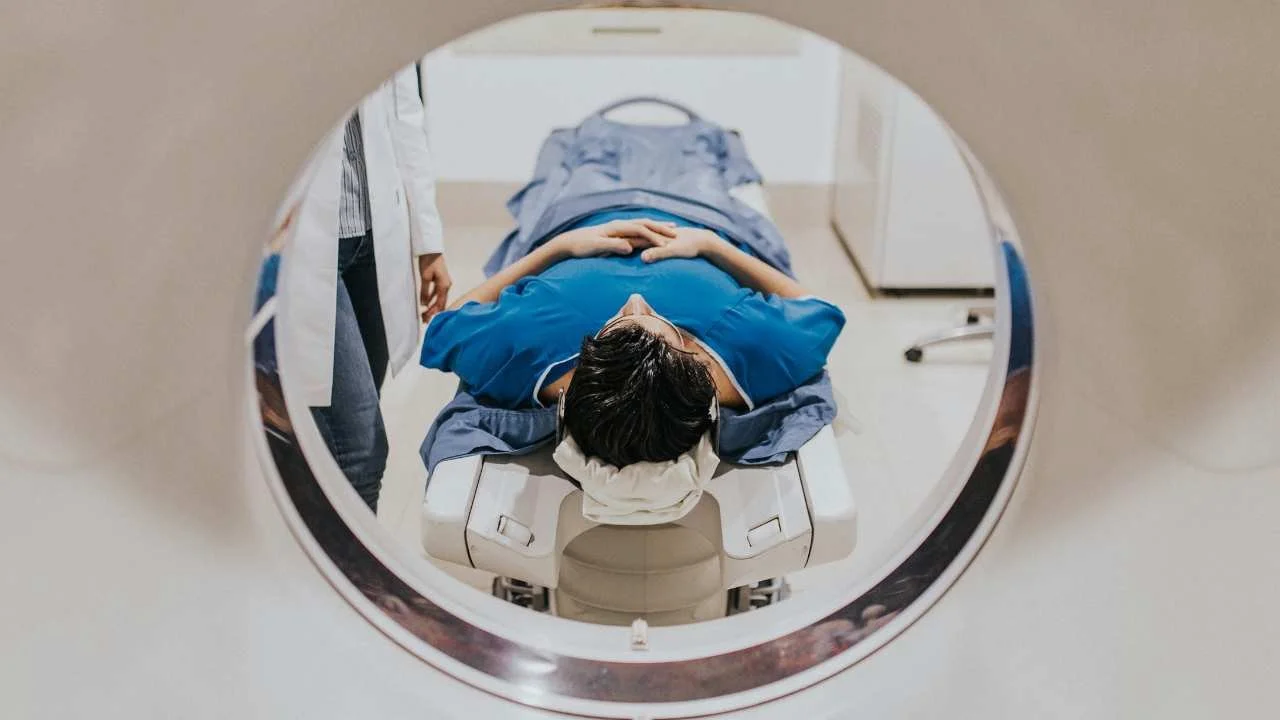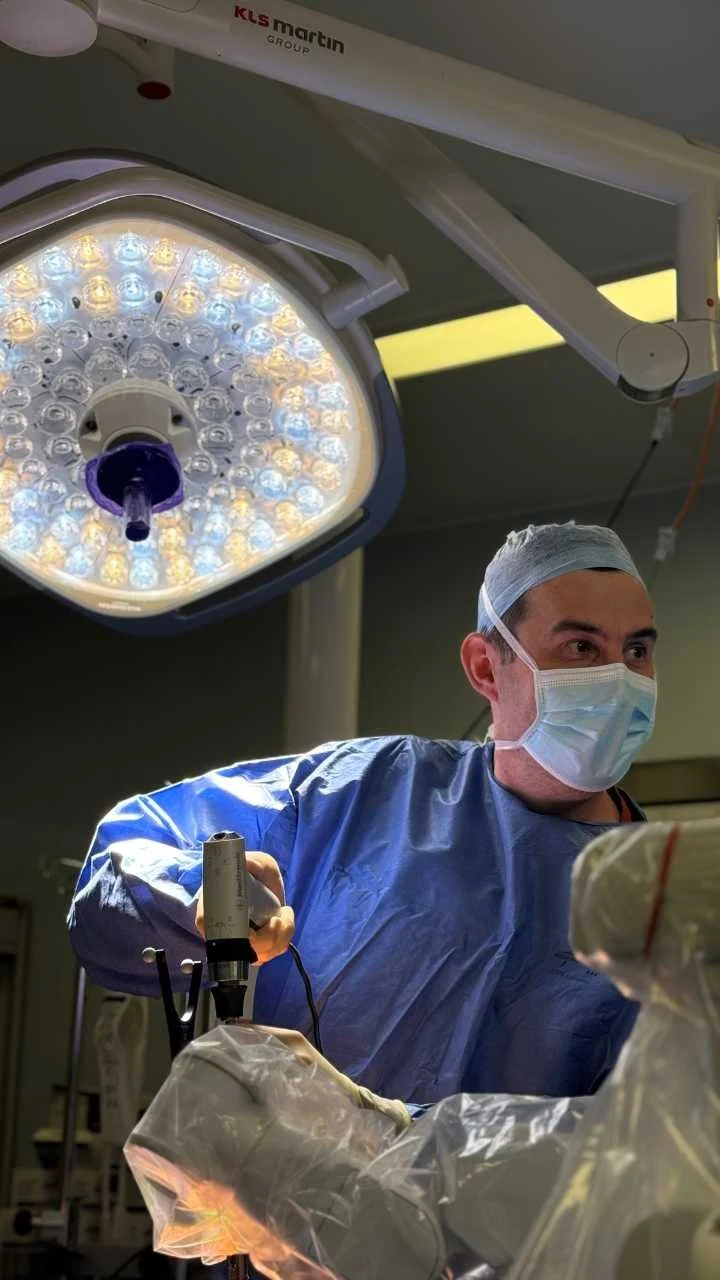Cauda Equina Compression vs Cauda Equina Syndrome
From Manageable Pressure to Medical Emergency
Hearing the words Cauda Equina can be unsettling. Online information often blurs the line between a manageable spinal issue and a true medical emergency.
In reality, there’s an important difference between Cauda Equina Compression and Cauda Equina Syndrome. While both involve pressure on the same bundle of nerves at the base of the spine, their severity, and what you need to do about them, are very different.
Cauda Equina Compression is relatively common and, in most cases, can be safely managed through careful assessment, monitoring, and specialist-led treatment. Cauda Equina Syndrome, on the other hand, is a medical emergency that requires urgent surgical intervention to prevent lasting nerve damage.
Understanding the distinction can help you stay calm, act appropriately, and make informed decisions about your spinal health.
What Is the Cauda Equina?
At the lower end of your spinal cord is a delicate bundle of nerves known as the cauda equina, or “horse’s tail.” These nerves carry messages between your brain, legs, bladder, and bowel, controlling sensation, muscle movement, and essential bodily functions.
When these nerves are compressed, it can cause back pain, leg pain, or numbness. The Cauda Equina Compression is a radiological description of compression of the nerve roots that can progress to Cauda Equina Syndrome that is a CLINICAL symptom of dysfunction of the nerve roots that innervate your intimate parts and lower limbs.
Cauda Equina Compression: Common, Manageable and Important to Monitor
Cauda Equina Compression refers to pressure on the lower spinal nerves that can cause pain, tingling, or weakness in the legs.
It is relatively common and often linked to conditions such as lumbar disc herniation, spinal stenosis, spondilylolisthesis or degenerative spinal changes.In most cases, compression does not cause bladder or bowel problems, and symptoms can be managed safely through specialist review and conservative care.
Typical symptoms include:
Lower back pain that may radiate into one or both legs
Mild or intermittent numbness or tingling into one or both legs
Occasional mild weakness or heaviness in the legs
Pain that worsens when standing, walking, or sitting for long periods
If you experience these symptoms but have normal bladder and bowel control, normal sensation around intimate parts, the situation is unlikely to be an emergency. You should still see a spinal specialist or neurosurgeon for an assessment and possibly an MRI scan to confirm the diagnosis and evaluate the severity of compression.
As Mr Gordan Grahovac, Consultant Neurosurgeon and Complex Spinal Surgeon, explains:
“Many patients search for Cauda Equina online and panic when they see the word ‘syndrome’. In reality, compression is far more common and with early diagnosis and professional management, it can be treated effectively without long-term damage.”
Cauda Equina Syndrome: When Pressure Becomes an Emergency
Cauda Equina Syndrome (CES) occurs when the compression becomes so severe that it affects the nerves controlling the bladder, bowel, and lower limbs. This is a true neurosurgical emergency, and urgent spine surgery, ideally within 48 hours, is required to prevent permanent nerve damage.
Symptoms requiring immediate emergency attention include:
Sudden, severe numbness in the inner thighs, buttocks, or genital area (“saddle anaesthesia”)
New onset incontinence or difficulty passing urine
Loss of bladder or bowel movement control
Weakness or loss of movement in one or both legs
Rapidly worsening back pain with neurological symptoms
If you experience these, call 999 or go directly to A&E. The sooner the pressure is relieved, the greater the chance of recovery.
Diagnosis: How Specialists Tell the Difference
If you develop new back or leg symptoms, your specialist will work to determine whether you have Cauda Equina Compression or Cauda Equina Syndrome.
Diagnosis usually involves:
MRI scan to confirm the level and severity of spinal cord compression
Neurological examination to assess strength, sensation, and reflexes
Bladder and bowel function tests to identify nerve involvement
There is no single Cauda Equina Syndrome test, diagnosis relies on combining scan results with clinical assessment.
If compression is mild and your symptoms are not severe, you’ll likely be monitored and treated conservatively. If symptoms suggest full Cauda Equina Syndrome, emergency surgery will be performed immediately.
Treatment Options: From Monitoring to Surgery
Cauda Equina Compression treatment focuses on relieving pressure and preventing progression:
Physiotherapy to improve mobility, posture, and core strength
Medication or targeted injections to reduce inflammation and pain
Minimally invasive spinal surgery only if symptoms worsen or persist despite conservative care
Cauda Equina Syndrome treatment requires urgent decompression surgery, such as a lumbar laminectomy or discectomy, to remove the cause of pressure on the nerves.
As Mr Grahovac notes:
“The main difference is time. Compression can often be managed calmly and effectively, but Cauda Equina Syndrome cannot wait. Knowing the signs allows patients to act safely without unnecessary fear”
Recovery and Outlook
Most patients with Cauda Equina Compression recover well under the care of a spine specialist, particularly when supported by physiotherapy and lifestyle changes.
After surgery for Cauda Equina Syndrome, recovery may take several months, with ongoing rehabilitation to regain strength, sensation, and bladder function.Even then, early diagnosis gives the best outcomes. Unfortunately in a small percentage of the patients some patients can be affected for the rest of their life with the loss of bladder and bowel or chronic leg pain or weakness.
If you’re unsure which condition applies to you, it’s always best to seek reassurance from a spinal consultant, early assessment offers clarity and peace of mind.
Expert Assessment and Ongoing Care
Mr Gordan Grahovac, Consultant Neurosurgeon and Complex Spinal Surgeon in London and Kent, is regularly involved in both emergency spinal surgery and the management of nerve compression before it becomes severe.
He provides:
Rapid assessment and imaging to confirm or rule out Cauda Equina Syndrome
Emergency decompression surgery when urgent intervention is needed
Conservative and minimally invasive treatment for patients with Cauda Equina Compression
Long-term rehabilitation guidance and lifestyle advice for spinal recovery and prevention
Performing more than 350 spinal surgeries and procedures each year, Mr Grahovac is recognised as one of the best spinal surgeons in the UK, known for combining neurosurgical precision with a calm, patient-centred approach.
In Summary
Not every case of Cauda Equina Compression is dangerous. but all deserve professional evaluation. If you experience new symptoms, don’t panic, seek reassurance and accurate assessment from a spinal specialist.
If symptoms escalate, particularly bladder changes, leg weakness, or numbness around the saddle area, treat it as an emergency and call 999 immediately.
With the right expertise and timing, most people recover fully, and early action always leads to the best possible outcome.
Book a Consultation
Mr Grahovac is one of the UK’s leading complex spinal surgeons in London and Kent, and sees patients from across the UK seeking back pain treatment and permanent pain relief. He has specialist expertise in cauda equina, spinal stenosis, spondylolisthes, csf leaks, and more.
Take the first step toward understanding your pain and getting the right care. Book a consultation today.



